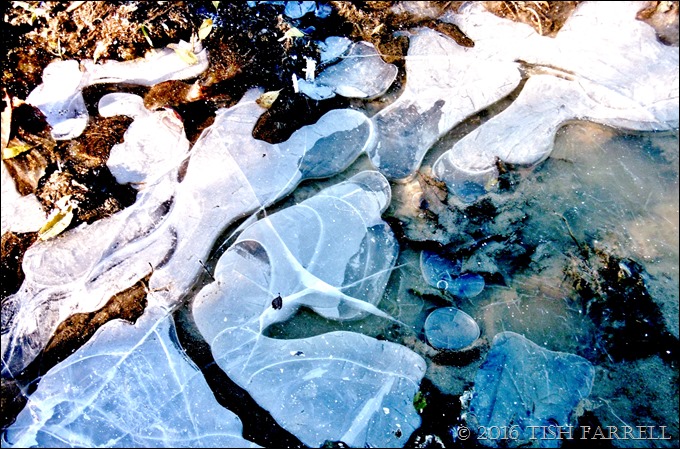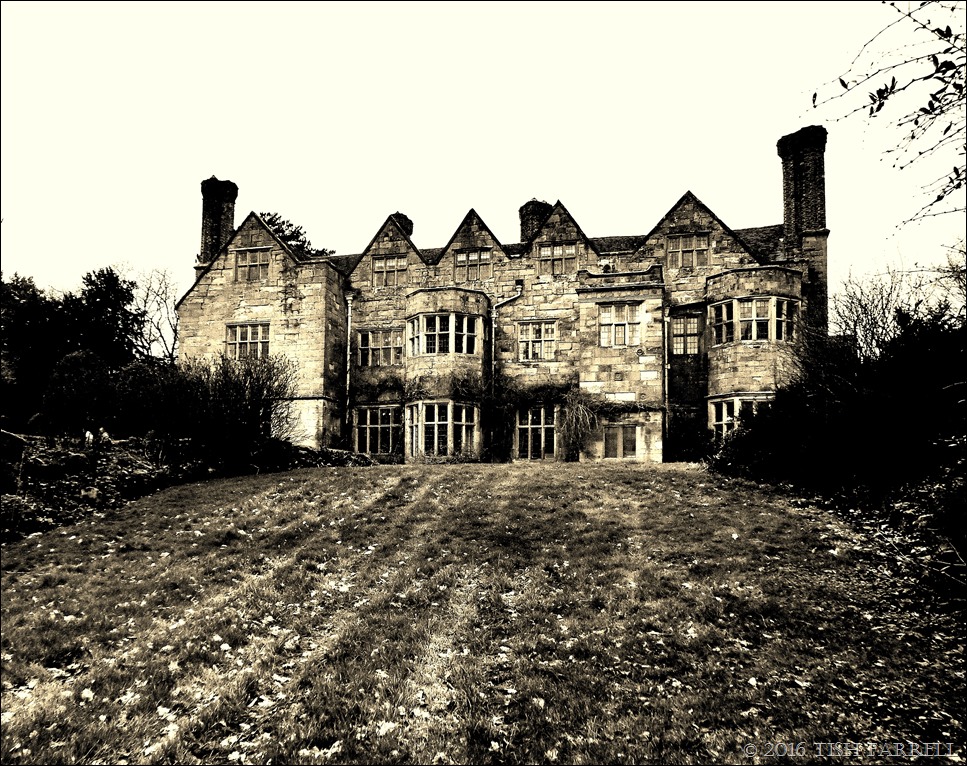
We went for a tramp along the Edge Wood at midday yesterday. It’s three fields up from our back garden and quite a haul to reach it. Once there, a breather is definitely called for, and so it’s a good moment to stop and look at the old Ironbridge Power Station cooling towers.

Some find them ugly, but I like them. They are true landmarks – geologically and historically speaking. They stand on the banks of the River Severn, England’s longest river, which rises in the Welsh uplands and descends through the Midlands to the Bristol Channel. The towers stand on a piece of landscape – the Severn Gorge – which was only created 15,000 years ago – a mere nano-second past in Earth History Time.
But the thing that most fascinates me is that the River Severn, presently running south past the towers, once flowed north, so meeting the sea on the coast between North Wales and Chester. This remarkable change of direction is all down to the last Ice Age and the fact that the land was glacier-locked as far south as Shrewsbury, our county town. The Severn’s northern outlet thus became blocked by ice, and so the river backed up, forming a great lake (Lapworth) as the water lay trapped between the ice sheet, and the limestone ridge of Wenlock Edge.
Little by little, as the Ice Age drew to a close, the river wheedled its way through the northerly end of Wenlock Edge and carved a new course, cutting through, and so exposing the Industrial Revolution-making strata of coal, ironstone, fire clay, and limestone. And as I’ve said in other posts, this part of Shropshire lays claim to being ‘the cradle of the Industrial Revolution’, though crucible might be a better metaphor, given the emphasis on iron production.
However, the 18th century pioneering ironmasters of the Severn Gorge were not the first to take advantage of the local geology. Nearly two millennia earlier the Romans were already exploiting these resources. Their military camp of Viroconium (Wroxeter) lay just to the north of the Gorge and, once the locals were suitably subdued, so the camp transformed into a great city, one of the four largest in Britain. There is evidence of glass making and iron working in the area, and local clays would have served for brick and tile production. In fact one of the brick-built basilica walls still rises impressively above the surrounding farmland, a surprising survival when so much of the city fabric was recycled through succeeding centuries.
Back in the Gorge, and many centuries after the end of Roman rule, the mediaeval monks of Buildwas Abbey and Much Wenlock Priory were also busy making use of local natural resources on an industrial scale. They had mines, decorative tile works, iron-making forges and bloomeries. They also had a thriving export business along the River Severn. There’s a record from around 1200 that states that the Prior of Buildwas was fined because twelve of his barges were blocking the river downstream at Bridgnorth. Probably not your usual vision of what monastic enterprises got up to.
Given so much entrepreneurial and manufacturing business afoot in the Gorge AND a navigable river with access to the great port of Bristol, it is not surprising that when the monasteries were dissolved in 1540, and their properties distributed to the king’s friends and favourites, that the place should attract a rash of opportunistic London merchants, lawyers and aristocrats, all out to get rich and exploit the former monastic concerns for themselves. Soap making, cold tar exploitation, coal mining, iron production, steel-making experiments were being conducted by very unlikely people of the well-heeled sort across south-east Shropshire.
Such industrial fervour was further stoked by Queen Elizabeth I (1533-1603) who offered a prize for anyone who could find a way to smelt decent iron using coal instead of charcoal. The loss of the nation’s great trees, needed for naval purposes and the protection of the realm, was causing the monarch much concern. The prize, however, was to remain unclaimed. It would be a good century later before Abraham Darby arrived in the Gorge and, after remodelling a former monastic iron works in Coalbrookdale, perfected the much sought-after technique.
His discovery helped shape the world we occupy today. See what geology has to answer for.
And here’s some more of quite another sort: the Wrekin. We have the best view of it on our homeward path back down into Wenlock.

The plain to the left of the hill was the location of the glacial Lake Lapworth. The Roman city was in that vicinity too. The Severn Gorge is off-screen to the right of the Wrekin.
I’ve written about the Wrekin’s mythological and geological origins HERE, but I may not have mentioned there that it has an Iron Age hillfort on the top. This was a stronghold of the Celtic Cornovii i.e. those who were duly subdued and citified by the invading Romans. Under Roman rule Viroconium became the Cornovii regional capital, which they continued to occupy until the late 600s – 700 C.E. when the site was abandoned.
We were always told at school that Viroconium’s last days were due to Saxons or Vikings marauding up the River Severn, but there is no sign that the exit from the city was anything but peaceful. I remember working on the excavation of the presumed road-of-retreat long ago as an archaeology student. I have to say that at the time I wasn’t altogether convinced by the site director’s interpretation of the remains that we were uncovering. At least it made me consider that much depends on the way you excavate a site. This site was being stripped across a whole field, rather than being investigated through the judicious placing of exploratory trenches. It seemed to me that certain trowelling techniques, as applied by willing and enthusiastic novices, might be responsible for creating features that aren’t actually there at all. An interesting thought on how the past might be re-created and invented.
And now just to prove how cold it was on our ramble, and not just gloriously, and so unexpectedly sunny: next some ICE, a phenomenon not witnessed in these parts for several seasons. Which brings me back to the start of this yarn, but hopefully not to the start of a new Ice Age as long predicted by certain climatologists. There have been enough tangents along our path already.

copyright 2016 Tish Farrell
Jo’s Monday Walk Please take a turn in this quarter for another fabulous ramble with Jo in the Algarve.







